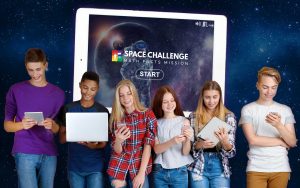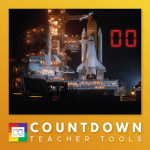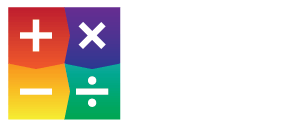Strategies Versus Memorization
Written by Kathy Robinson
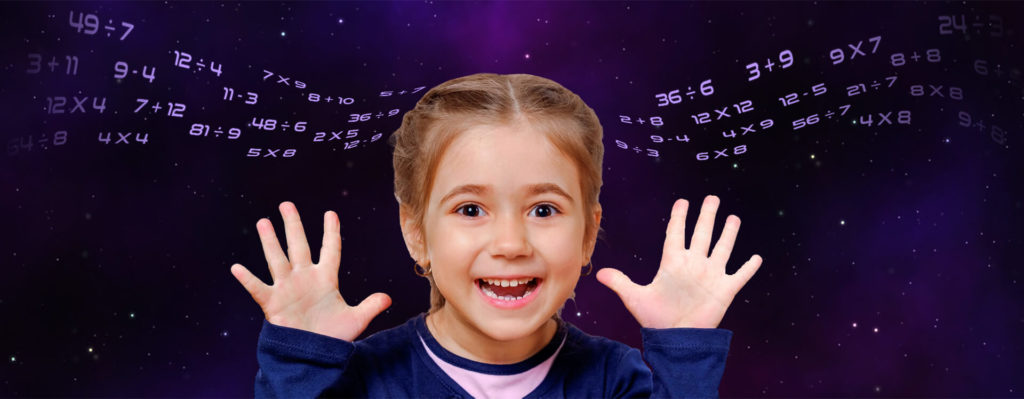
Please join me in a hot debate! Let’s discuss math fact fluency strategies versus memorization of facts.
At one time academia debated on whether we should even teach fact fluency believing daily arithmetic assignments result in automatic recall. This did not prove to be as successful as we hoped. Today, most educators concur we should teach fact fluency, but how we teach fact fluency is still a hot topic! Most of the debate rages around the methods of memorization versus strategies.
We once also debated the best method for teaching reading; phonics versus sight words. It seems that we now recognize the need to use both phonics and sight words. Just because readers recognize letter sounds and written words does not guarantee they know word meanings and can recognize contextual cues. However, phonics and sight words are fundamental and prerequisite to reading with meaning. Recognizing number values, operational symbols, and fact statements are also similarly fundamental and prerequisite to arithmetic and high rigor mathematics.
It appears to me, and other classroom teachers of arithmetic, that we should use both memorization and strategies as we teach math fact fluency just as we use both phonics and sight word recognition strategies to teach reading. Fact fluency is preparatory and prerequisite to mental math, movement along the number line (both fluid and bidirectional), and number sense. Having these fundamental computational fluency skills prepare students to fluently communicate in the language of high rigor mathematics.

Recognizing the need for math fact fluency in a math class already crowded with methods and high rigor content, teachers push students toward independent practice using flash cards, mad minutes and computer apps. Pushing learners to independently practice retrieve and release of unknown facts results in frustration. The learner knows his efforts are futile because there is nothing stored in memory to retrieve. Yet, how do we get the facts in memory without consuming total class time?
To compensate for unknown math facts, we teach learners to use strategies. Since the purpose of independent practice is to increase the retrieval rate of known facts, the best math fact strategies must ultimately transfer the fact to memory preparatory for independent and targeted practice. Strategies can be rated from 1 to 10 based upon their transfer rate. Independent practice should target retrieving and releasing only known facts. Unless the fact practice is targeted toward known facts (facts stored in memory), the learner is not practicing but taking a test.
Some strategies are better than others, but some are good only for certain age groups. An excellent strategy for all age groups is teaching the properties of 0s and 1s in addition and multiplication. In rating strategies from 1 to 10, I would give this one a ten because of the transfer rate of the fact into memory. Once the strategy is understood, the facts that follow the properties of 0s and 1s are almost immediately transferred into memory as known facts. Implementing this strategy takes time, especially for early learners, but when they get it, the payoff is large.

For decades we have been learning math facts using songs and rhymes. This intriguing and engaging method is great for cognitive understanding, the first step in learning math facts. Learners must first have a cognitive understanding of the number values, operation signs and symbols before they can store facts. Songs and rhymes are great ways to introduce or affirm fundamental arithmetic concepts. So why are many teachers disappointed with the results from this method? Why doesn’t singing the songs and repeating the rhymes result in rapid recall of math facts?
It is the song, and only the song, that is stored in memory. In order to retrieve the fact, the song must be recalled, and the fact extracted. Some will argue that the fact is stored in memory, but it is wrapped up in the stored song rendering the students attempt to rapidly retrieve facts very laborious. This method rates a 5 plus in cognitive understanding of number sense, but way below a 5 if used for fact memory storage.
Another good strategy is skip counting in preparation for multiplication. In fact, in my experience skip counting is necessary in preparation for multiplication, therefore I give this strategy a ten. However, skip counting works better with some numbers than others. For example, skip counting works best with 2s, 5s, 10s, and 11s. For these numbers, I give it a ten for memory transfer. However, it will not work as well for 3s and 4s. It is even slower in memory transfer for 6s, 7s, 8s, and 9s. There are ways of speeding up the transfer. In conjunction with skip counting, consider an activity with puzzles.
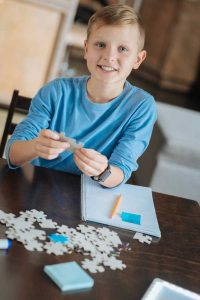
To practice 8s, purchase two 48-piece puzzles. Put them together, stack them and flip them over. Number the first row from 1 to 8, the second row from 9 to 16, third row from 17 to 24, etc. Divide the 96 puzzle pieces (face down) between four learners. Once the first player places a puzzle piece on the table, the second player must place a piece that is one less to the left, one more to the right, eight less on top or eight more on the bottom. Players will sometimes lose their turn if they do not have or recognize a playing piece. The first one to play all their puzzle pieces is the winner. This activity gives another dimension to skip counting. Learners are more engaged and puzzle pieces interlock for self-checking.
Click here for complete puzzle activity instructions
There are many other math fact fluency strategies educators suggest as effective. This is not a blog about all the different strategies since so many others have already done that well. What I do want to suggest is that every strategy you use should be rated by its transfer into memory. If it does so rapidly, you will get a good return on your time investment. If it is slow to transfer into memory causing you to rate it below a five, you may reconsider the investment of time and effort.
Also, reconsider memorization as an alternate strategy that works well with some facts and not so well with other facts. In our world today, many consider memorization unnecessary… some even consider it harmful. However, many studies are showing that memorization tones the mind in a way like exercise tones the body. Memorization can stabilize cognitive decline in mature learners and structure the mind in early learners.
When educators mention memorization, most think of rote memorization. I agree that rote memorization is not the best strategy; however, multi-sensory memorization is very different and can be highly effective. Multi-sensory memorization almost immediately places the fact in memory available for retrieval during independent student practice. Multi-sensory memorization is often the best strategy for some facts and should be included in a teacher’s math fact fluency toolbox as an alternate strategy.
What is multi-sensory memorization?
Multi-sensory memorization is based upon the latest brain research. The cerebrum of the brain is divided into four lobes: frontal, occipital, parietal, and temporal.
The frontal lobe processes information. All problem solving is done in the frontal lobe including moral dilemmas and/or mathematical resolutions. The processing memory in the frontal lobe continues to mature until about thirty years of age. The processing memory in the frontal lobe is limited and easily consumed in early learners. It is the job of the other three lobes to act as sentinels to discriminately filter distractions protecting the frontal lobe as it works.
The other three lobes are highly sensory. The occipital lobe processes visual input such as colors, shapes, size, dimensions, faces, written words, and objects. The temporal lobe processes auditory information such as sounds and speech while allowing us to comprehend spoken words. The parietal lobe manages input from all the senses and processes touch. It assesses numerical relationships and the size, shape, orientation in space, processes language and coordinates attention. In summary, the occipital lobe is relative to sight; the temporal to sound; and the parietal to tactile or touch.
When information is presented in a way that appeals to these sensory lobes, it is easily retrieved using sensory cues such as visual, auditory and tactile. You can see children using these retrieval cues as they try to respond to math fact problems using flash cards, mad minutes, computer apps and assignments.
Learners attempting to retrieve a fact using a visual cue look away hoping to see the fact complete with the answer in a place stored deeply within the mind. Learners retrieving a fact using an auditory cue will repeat the fact aloud. Perhaps under their breath or in a whisper, but with voice. Learners using tactile cues to retrieve a known fact will not audibly repeat the fact, but you will see their lips moving as they attempt to recall the stored fact.
As learners become more proficient at recalling the facts, their rate of retrieval increases, and the cues will no longer be necessary. Their response is now automatic. For specific facts, their retrieve and release rate will be under three seconds. Over time with use of known facts, the brain is so profoundly amazing, even young learners will respond in less than one second to certain facts. By the end of sixth grade, many learners have the potential to respond to most facts in all four operations in under one second! If your students can do this, you are a gift to their future mathematics teachers.
How does multi-sensory memorization work?
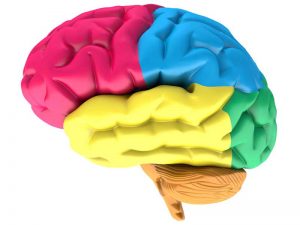
Multi-sensory memorization works by appealing to the sentinel lobes using methods that encourage the lobes to receive information you consider worthy of memory storage. The best method is an old-school method that has come back in vogue because of practical classroom experience…it works!
This old-school method has been modified to be more current for today’s classroom. It is called the see, say, hear and write method. Teachers now use it for a variety of subjects. This method is highly effective in math fact fluency and straightens the learning curve while reducing classroom time consumption. With the use of technology, it can be implemented in less than 3 minutes per day!
Occipital Lobe

In appealing to the occipital lobe, we project the image of the fact. The traditional method includes the use of flash cards. It is also traditional that the fact statement is displayed without the answer. Many use flash cards without the answer in independent student practice. It is also the method used in most computerized programs offering independent student practice. The fact is displayed, sometimes starkly, other times very pleasing aesthetically, but still it is displayed without the answer. Unless the facts presented are known facts, this is not practice. It is an assessment. Not a bad way to test learners for knowledge. However, it is not a good method for student practiceif you are appealing to the occipital lobe.
As the fact is displayed, eventually the brain will capture an image of the fact. (The display time should be longer for younger learners). If the captured image does not have the answer with the equation, the visual cue pulled forward by the learner will be 4 x 8 = benefiting no one. Try instead including the answer while in the practice mode. Display the fact with the answer 4 x 8 = 32 and the brain will capture it like a sight word.
From my experience in teaching facts to learners of all ages and abilities, the brain more readily stores the fact in the horizontal mode. Once the fact is stored horizontally, relative to the age of the learner, the student can easily flip this fact into a vertical view. Once learners can respond to both horizontal and vertical views, they are better prepared for number sense and computational fluency.
A more mature learner can and should also be challenged to flip horizontally stored facts to a pre-algebraic view such as 4y = 32. Activities requiring learners to recognize facts in the pre-algebraic view are excellent practice for the overachiever outpacing the other learners in your class. Activities such as this promote depth of knowledge and expose learners, even at early ages, by introducing the algebraic language in preparation for algebraic statements. Go deep and avoid the temptation to go wide with the facts by giving advanced learners another group of facts or a different operation. This is an open window of opportunity for this learner. If you need help with ideas, please post in the blog response section.
Temporal Lobe
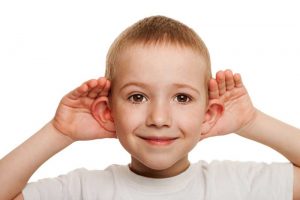
Magnetoencephalography (MEG) was used in a study to discover how quickly MEG measures neurons firing in response to a stimulus or sound. Children under 10 years of age, respond in 200 milliseconds. Older children respond in about 130 milliseconds and adults within 100 milliseconds. Learners with autism and certain other learning disabilities can be expected to take more than the average amount of time to respond to auditory stimuli.
According to the information in the previous paragraph, appealing to the temporal lobe may not be as easy as stating information, even multiple times. The younger the learner, the more repetition is needed to appeal to the temporal lobe. It helps the learner appeal to the auditory lobe when the one stating the fact is a voice of authority. Learners respond especially well to the voice of their teacher as a trusted source. Leading your classroom in saying the facts appeal to the temporal lobe reducing the number of times a learner will need to hear the fact before it becomes stored in memory.
Requiring learners to repeat the facts out loud affirms the appeal to the temporal lobe. The echoed chorus of peers stating the fact is a second appeal to the temporal lobe. This second auditory appeal is especially important to the early learner slower to respond to sound stimuli. Finally, the third and perhaps most authoritative appeal is the sound of the learner’s own voice as they repeat the fact statement complete with the answer.
Parietal Lobe

The area of the parietal lobe responds to the slightest sense of touch. Using touch to appeal to the parietal lobe is highly effective. Many think writing math facts is the tactile component in appealing to the parietal lobe. It does contribute; however, the activity that best appeals to the parietal lobe is a surprising discovery.
The inside of the mouth is one of the most sensitive areas of the human body. When small children pick-up an object to examine it then place it in their mouth, it is not about taste but touch. They are exploring the item tactilely. As students say the facts, the tongue thrusts to the roof of the mouth, past the teeth as the lips form. A unique pattern is established for each fact, and the brain records the sequence. As the learner repeats the fact saying 6 x 8 = 48, over time 48 falls out.
Writing facts is important, especially if the learner targets written unknown facts. Unknown facts are discovered by assessing your students with a weekly quiz. Writing known facts is unnecessary. Missed facts should be written only 3 times each. Writing the facts is an eye, hand, and brain activity that simultaneously appeals to all three sentinel lobes. When the frontal lobe sends an appeal to the three sentinel lobes, individual learning styles will drive the first response. If the learner is a visual learner, the occipital lobe will respond first. If the learner is an auditory learner, the temporal lobe will respond first. If the learner is a more tactile learner, the parietal lobe will be the first to respond.
Is multi-sensory memorization the solution you have been looking for?
Multi-sensory memorization is easy and affordable to implement, taking less than 3 minutes per day. Simply identify the facts you want to target for your grade group and conduct daily practice.
You can identify the facts your students need using an assessment. For grades 3 to adult, try the FREE Space Challenge benchmark offered by Math Facts Matter.
Create classroom size flash cards from card stock, or if you are tech savvy and have a projector, you may prefer using PowerPoint or a computer app like Countdown. Countdown is a multi-sensory memorization teacher tool by Math Facts Matter. You can get a FREE two-week trial and apply for a grant opportunity to receive a significant discount off the price. You can learn more here.
Sources:
https://www.brainscape.com/blog/2012/07/memorization-brain-benefits/
https://www.spectrumnews.org/news/maturity-of-brains-sound-processors-may-lag-in-autism/
